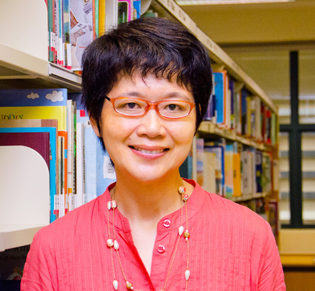Why Singapore’s English Teachers Should Embrace Singlish, Not Fight It
Is it time for Singaporean educators to embrace Singlish as a legitimate learning tool? What the Research […]
Read More
Ask any teacher where they start when crafting their lessons and chances are they’ll tell you – the syllabus. But while a good syllabus is important and teachers depend on it as a guide, Principal Master Teacher Ang-Tay May Yin says that’s not the solution to good teaching. So, what is?
May Yin has been a teacher, curriculum planner, specialist inspector, school leader, teacher educator, and is now a teacher mentor.
She has a keen interest in designing and developing curriculum and was involved in the development of the 2001 and 2010 English Language (EL) syllabuses. Both syllabuses were designed with the aim of developing students to use English effectively.
While a syllabus is critical for describing what students should learn and how teachers should teach, May Yin acknowledges that even the best syllabus is not the be-all and end-all of good teaching.
“Drawing up the world’s best syllabus is not the solution to improving the learning of our students,” she says. “What really matters is a collaborative partnership with teachers to improve teaching and learning.” Such a partnership involves co-teaching, coaching and role modelling.
May Yin brings over 20 years of experience – and lessons learned in curriculum development – into her current position as Principal Master Teacher with the English Language Institute of Singapore (ELIS), which was set up to drive excellence in EL teaching and learning in Singapore schools.

What is the aim of good language teaching?
“The aim of language teaching is for our students to be effective communicators in English, which is an important and necessary 21st century competency,” says May Yin. “This is what EL teaching has always been and is about – that our students are able to communicate effectively in English.”
But while the goal is still the same, our approach to EL teaching and learning – and thus our policies and syllabuses – would invariably be influenced by global and national concerns, the changing role of English in Singapore and the world, the needs of our students, and developments in language research and pedagogy.
Because English is not the home language of all our students, the teaching of EL must take into account our multilingual context. This means that we need to build in our students a strong foundation in language skills, grammar and vocabulary, which is the prerequisite for effective communication.
So, what should EL teachers know and do in order to develop our students to be effective communicators?
For May Yin, a syllabus is only good when the learning outcomes in it are realized through skilful teaching.
The aim of language teaching is for our students to be effective communicators in English, which is an important and necessary 21st century competency.
For EL teachers, this means having a strong foundation in three areas: knowledge of subject content, knowledge of pedagogy, and knowledge of the use of information and communications technology (ICT) to enhance the teaching of English.
“I believe that the EL teacher today must have deep knowledge of subject content for it is fundamental to EL teaching and learning. This means having a firm grasp of fields such as phonetics and phonology, grammar, semantics, and pragmatics, psycholinguistics and sociolinguistics.”
In addition, EL teachers must have knowledge of the theories of language learning and know how to apply the “Principles of EL Teaching and Learning”, which are articulated in the English Language Syllabus 2010 (MOE, 2010, p. 11).
Knowledge of subject content will improve teachers’ pedagogical practices.
“EL teaching is not just about having students complete worksheets and do written exercises,” says May Yin.
“Teachers have to explicitly teach language skills, learner strategies, and knowledge about language to their students. They need to consciously impart processes that will help students become self-directed and self-aware.”
These processes include teaching students how to read critically, pose critical questions, and interpret and evaluate the text that they read. May Yin emphasizes, “There has to be a balance between process and product.”
Is there a 21st century pedagogy for EL teaching?
For May Yin, this is encapsulated in the EL Syllabus 2010 recommendation that teachers adopt a “principled blend of first and second language teaching methods”. This pedagogy may be described as principled eclecticism.
To effectively blend teaching methods, teachers need to have a wide repertoire of teaching approaches.
At the same time, they must know how to make informed choices about which teaching approaches would be appropriate for their students, be able to articulate why they made those choices, and apply them according to the learning context and the learning outcomes to be achieved.
To do all these, they must have a strong foundation in the three areas that were mentioned above.
May Yin cautions teachers against being “faddish” in their pedagogical choices. “What matters is whether students’ needs, abilities and interests are catered to. Teachers have to make sound decisions on what best suits their students.”
Reference
Ministry of Education (MOE). (2010). English Language syllabus 2010. Singapore: Curriculum Planning and Development Division, MOE.